
Volkswagen Golf SV (2014-2020) review
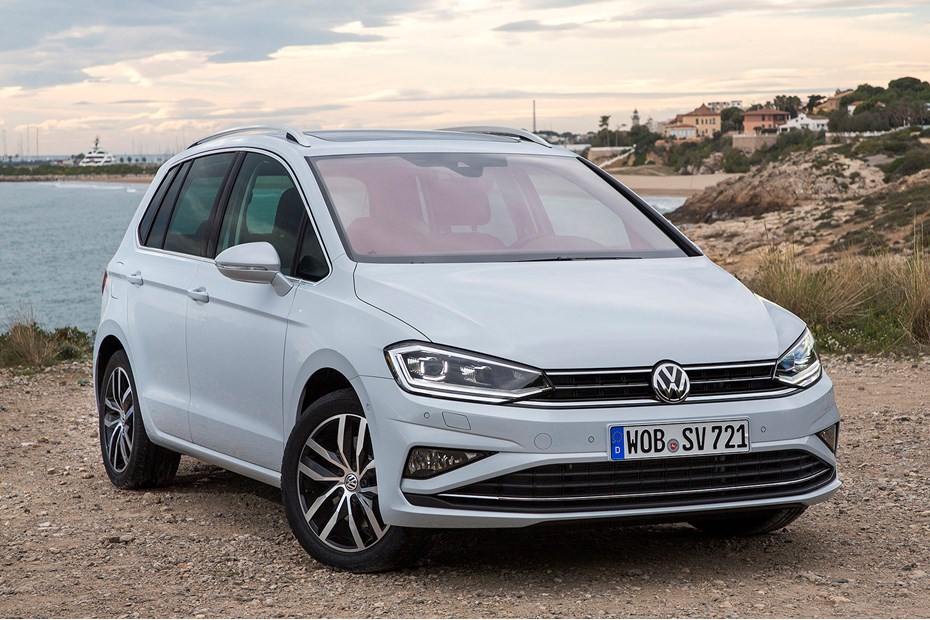
At a glance
| Price new | £19,745 - £30,485 |
|---|---|
| Used prices | £3,140 - £17,450 |
| Road tax cost | £0 - £190 |
| Insurance group | 7 - 19 |
Get an insurance quote with

|
|
| Fuel economy | 40.9 - 55.4 mpg |
| Range | 561 - 814 miles |
| Miles per pound | 6.0 - 7.3 |
| Number of doors | 5 |
| View full specs for a specific version | |
Available fuel types
Petrol
Diesel
Pros & cons
- Practical
- Easy to drive
- Comfortable
- Not an SUV
- Not very exciting
- Bigger than Golf hatch
- No hybrid model
- Not an SUV
Volkswagen Golf SV (14-20) rivals
Overview
Is the Volkswagen Golf SV any good?
Few cars highlight the difference in car culture between the UK and Europe like the VW Golf SV – a mini-MPV that has sold 10 times as well in Germany than here since it was launched.
It rivals small MPVs like the Ford C-Max and Citroen C4 Picasso, with a flexible rear seating setup and large boot that should make it more attractive to families than the considerably more popular Nissan Qashqai. A five-door hatchback that takes the immensely successful VW Golf and adds practicality, interior space and ride comfort – it’s hard to understand what’s not to like.
A new model is on its way, and will be on sale in the UK before the end of 2021.
What’s it like inside?
The cabin of the Golf SV will be like a home from home to anyone who’s been in a Golf hatchback, with switchgear, instruments and plastics shared across both cars. That’s a good thing though, as it means the driver is surrounded by high-quality materials, clear and easy to read instruments plus simple to operate yet robust switchgear.
It’s not exactly the same though – the SV has a slightly different dashboard to the hatchback, which is higher up and features instruments and the infotainment screen in a more prominent position, making them very clear and easy to see and reach.
We particularly like the touchscreen infotainment system, upgraded for 2017 with an 8.0-inch standard unit and the superbly crisp 9.2-inch optional Discover Pro sat-nav system. Both feature the excellent proximity sensor touch system (menus and controls are hidden until your hand is near the screen) but annoyingly only the smaller screen has a physical volume knob for the stereo.
Elsewhere there’s a soft-touch dashboard, a choice of inlays and sculpted three-spoke steering wheel, all offering an air of quality. While this is a taller car, the driving position (although higher) is much like the hatchback, which makes it more rewarding and less taxing to drive.
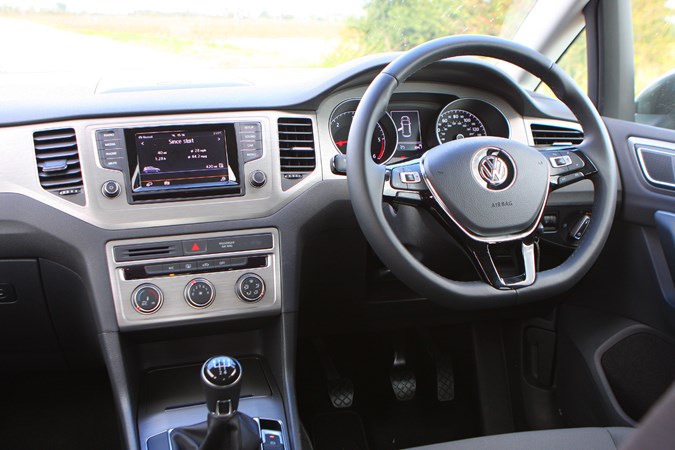
Comfort
Volkswagen Golf SV comfort is taken care of by a large, spacious and airy feeling interior. The front seats include plenty of adjustment, and the driver’s seat can even be specified with extra padding and a massage function – called ErgoActive.
There’s even adjustment for the rear bench, which can slide fore and aft across a range of 180mm, meaning you can prioritise boot or legroom. Do the latter and the SV becomes positively sumptuous, with enough legroom for adults to stretch out behind others, with the option to recline the backrest angle as well.
We reckon the middle rear seat is a little narrow for more generously proportioned adults though – bear in mind those sat three across the rear bench will need to be well acquainted – or at least they will be by the end of the journey.
How much space is there?
Interior space is what the Golf SV is all about and that means a large and airy cabin with ample leg and headroom all around. The SV has an extra 50mm between the wheels so there’s enough room in the back for a six-foot-plus adult, even behind a similarly sized driver.
There’s enough headroom in the rear middle and only a small transmission tunnel to straddle, but the seat itself is narrower than the outer pair so best reserved for your thinnest occupant.
The rear bench also sits 619mm off the ground, which is higher than the hatchback’s 535mm. That’s something elderly passengers will appreciate, and it also means loading a childseat is less of a back-breaking affair.
Finally the rear bench offers greater flexibility than any other Golf because it can be slid forwards and backwards by up to 180mm depending on whether you want more passenger or luggage space.
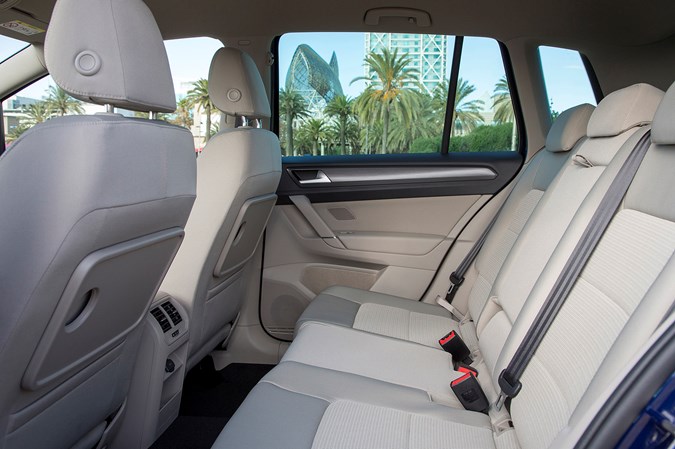
Luggage space and storage
Not only is the Golf SV’s boot 120 litres larger than the standard car, it’s more flexible too, thanks to a rear bench that can slide forwards and backwards by 180mm to increase luggage space or passenger space.
The seats slide with a 60:40 split but collapse (sort of) individually thanks to a curiosity in the way the chairs are arranged. The only seat that can’t be folded by itself is the left one, which takes the middle with it. You can fold the right or middle one by itself in a kind of halfway house between the Golf hatchback’s two and the Touran’s three individual seats.
That means the loadspace can be expanded from 500 to 590 litres by sliding the seats, while the full 1,520 litres is unlocked by folding them flat – that’s 250 more than hatchback and 140 less than estate.
To get the maximum bootspace you need to move the variable height floor down 133mm to its lowest setting, sacrificing the (relatively) flat load space. A folding front passenger seat is offered as an option to allow longer items measuring up to 2,484mm to be transported.
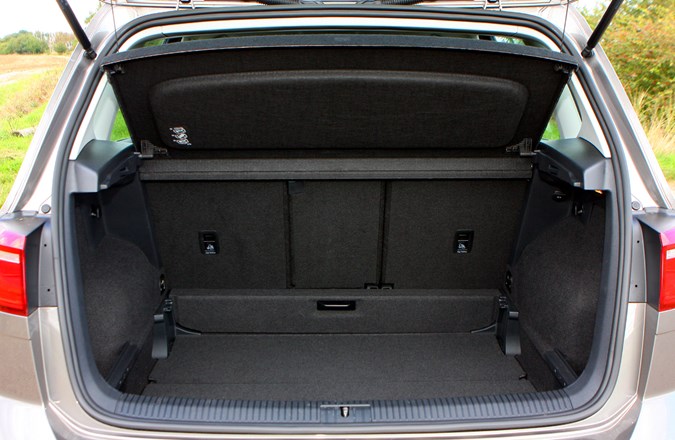
Is it easy to park?
As you’d imagine the Golf SV is longer than the hatchback but shorter than the estate, offering a balance of compact dimensions and practicality, rather than excelling in either area. That does mean it’ll be easy to park though, particularly if you select the Park Assist option. This tech is now in its third generation and can drive the car in and out of bay or parallel spaces.
Usefully for parents with a buggy to load and unload (or anyone else who needs regular access to the boot) this system can also park the car nose-in to a bay as well.
What’s it like to drive?
There are six engine outputs to choose from with four petrols and two diesels ranging from 85hp to 150hp. All but the base 1.0-litre motor have a choice of manual or automatic gearboxes, so if you want a DSG you’re well catered for.
Kicking things off is the entry-level 1.0-litre TSI with 85hp in S trim with a five-speed manual gearbox only. This offers up 175Nm from 2,000rpm and is unlikely to be a particularly exciting powerplant – that’s reflected in its 0-62mph time of 13 seconds and 110mph top speed. More like it is the punchier 110hp version of the same engine – a three cylinder unit, incidentally, which doesn’t announce its piston count particularly vocally unless you really hammer it, although you need 5,000rpm for peak power.
There’s a swell from the turbo in the middle of the rev-range, where you’ll find 200Nm of torque from 2,000rpm, and a choice of six-speed manual or seven-speed auto gearboxes. This car takes 10.7 seconds to get to 62mph at tops out at 119mph.
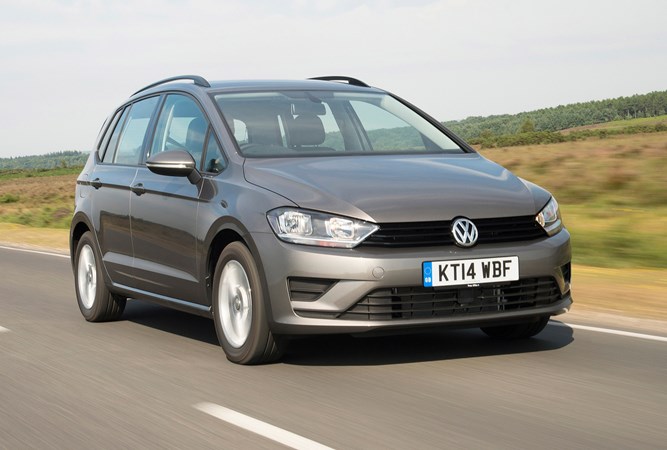
Offering the same transmission choice is the 1.5-litre EVO TSI with 130hp from 5,000rpm and is realistically all the power your Golf SV needs, taking just 9.6 seconds to get from 0-62mph. This engine is far smoother and quieter than the 1.0-litre, and although it produces the same 200Nm of torque, it’s more readily available at lower (1,400rpm) revs. Top speed here is 125mph.
Topping the bill in terms of petrol power is the 150hp version of the same engine, with a burlier 250Nm of torque, from 5,000rpm and 1,500rpm respectively. This boosted figure means you get the stronger six-speed auto ‘box or a manual with the same number of ratios, and the choice of GT trim only. It’s faster too with 0-62mph taking 8.8 seconds and the top speed is 132mph.
Diesel engines
There’s a a 1.6-litre, 115hp unit and a 2.0-litre 150hp engine to choose from, with both featuring five-speed manual and seven-speed auto or six-speed manual and six-speed auto gearboxes respectively.
The latter has proved impressive in larger VW vehicles such as the Touran and Tiguan thanks to its higher torque output, and we reckon this will be a great engine if you regularly fill the car and boot to max capacity.
Handling
The extra height, width and wheelbase means the SV’s responses are slightly softened compared to the sharper hatchback, but there’s still plenty of front-end grip, the SV using the same electronic XDS differential to maximise traction across the front axle through a bend.
Through the tighter corners, and at speeds you wouldn’t dare travel at with children on board, it will push wide and begin to lean over more, but it’s never unsafe or even particularly unruly. Dynamic Chassis Control – which alters the responses of the suspension – is available but our experience of the Golf hatchback suggests that should your car not be kitted out as such, you’ll rarely notice its loss.
A drive select system with Comfort, Eco, Sport and Individual (allowing users to tailor all responses) modes for the steering, engine and, where fitted, automatic gearbox responses is available on higher spec cars. Regardless of choice the steering isn’t laden with feel and feedback, but it is more than acceptable for a family car of this type.
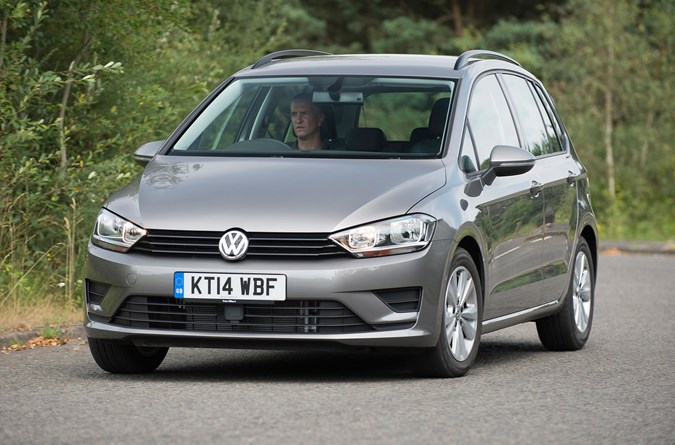
Ownership costs and reliability
Aimed purely at families, it’s no surprise that VW Golf SV running costs are entirely reasonable, thanks mostly to the low CO2 emissions and high economy figures it promises.
For the lowest emissions, look to the diesel 1.6-litre TDI 115 SE with seven-speed DSG automatic gearbox; that combination produces 106g/km. The worst emissions, at 129g/km, are produced by the 1.4-litre TSI 150 GT petrol with manual gearbox, reflecting the overall level of efficiency offered by the Golf SVs range of engines.
And thanks to the company’s popularity, there are plenty of VW dealers to visit for maintenance, so you won’t have to travel far or spend much on fuel to keep your SV in tip-top shape.
Reliabilty
It’s safe to assume Golf SV reliability will be no different from other models in the range. Especially when you consider that it is essentially just a Golf hatchback underneath, with proven mechanicals shared across the VW group. In fact most of the technology found in the car is shared with other VW group products, although the cars from 2017 feature a couple of new engines such as the 1.0- and 1.5-litre petrols.
The cabin has plenty of soft-touch materials dotted around, but despite their tactility, they’re likely to be hard wearing too – just be wary of the lighter material colours for the interior, as they may mark rather too easily.
Safety
Like the Golf hatchback on which it’s based, safety levels for the Golf SV are high, scoring five stars when tested by the experts at Euro NCAP. Cars from 2017 on do have two autonomous braking systems fitted as standard – Front Assist avoids cars while Pedestrian Monitoring spots people – plus there are many optional assistance systems.
These include Traffic Jam Assist, Emergency Assist (this jolts the brakes to wake a sleeping driver and can slow the car to a stop) plus Park Assist 3.0 and Trailer Assist. Unlike the larger VW Touran the Golf SV offers two Isofix points across the rear bench, but they’re just as easy to locate thanks to similar moulded plastic tunnels in the seatback that guide the childseat into place, and protect your upholstery.
What models and trims are available?
Following a facelift in 2017 the engine line-up was revamped with a choice of 1.0- and 1.5-litre petrols and 1.6- and 2.0-litre diesels. The top seller will be the 1.5-litre TSI with 130hp and DSG in SE Nav trim, followed by the same configuration with a manual ‘box. These two alone will make up half of all sales – such is the suitability of this particular engine to the Golf SV
Facelifted cars received updated bumpers front and rear plus standard LED rear lights and a different headlight layout with optional LEDs. The radar sensor for the now-standard autonomous braking has been moved behind the VW badge and new, larger infotainment screens from the Golf hatch find their way into the cabin.




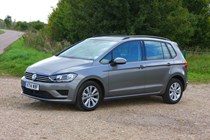
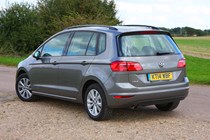
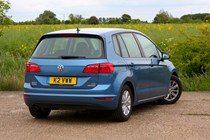


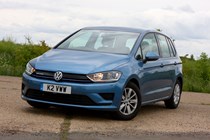
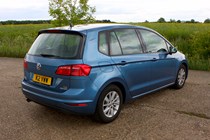

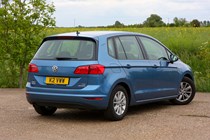
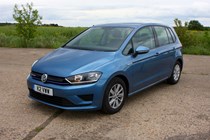
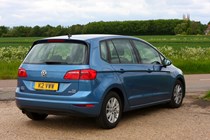
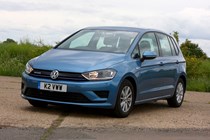
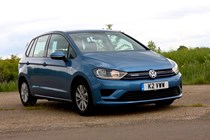
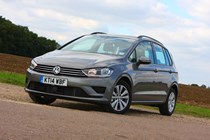
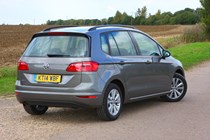
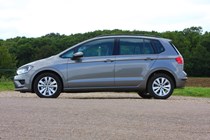
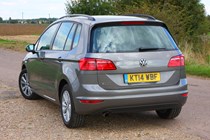
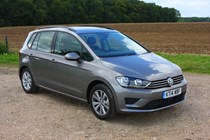
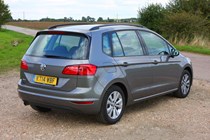
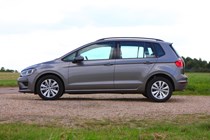
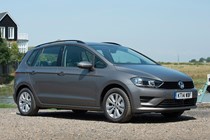
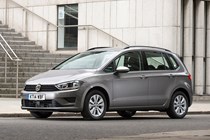
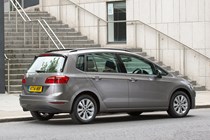
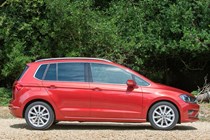
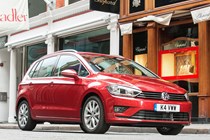
.jpg)
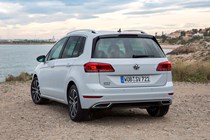
.jpg)



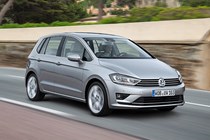
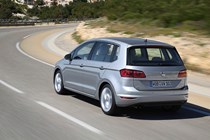


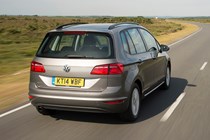
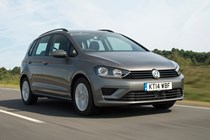
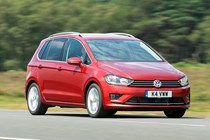

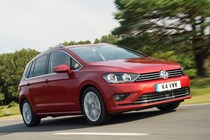
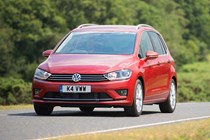
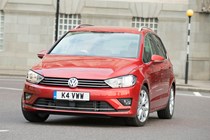

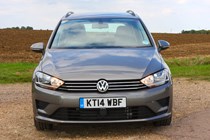
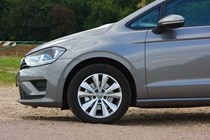
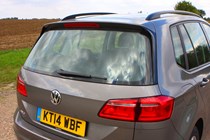

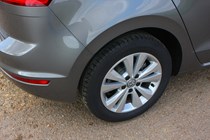
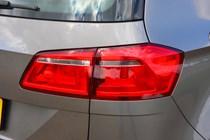

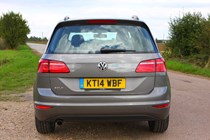

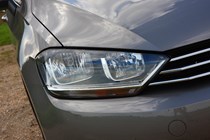
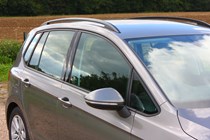
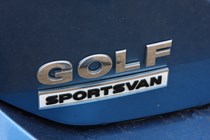
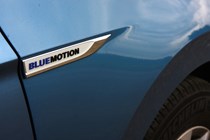
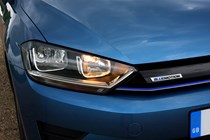
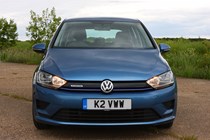
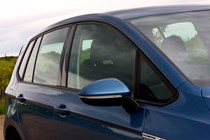
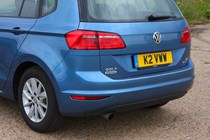

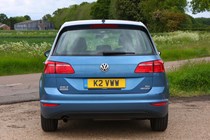
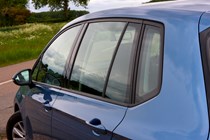
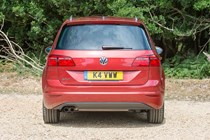

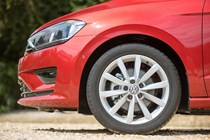
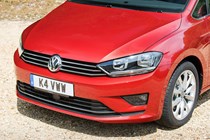

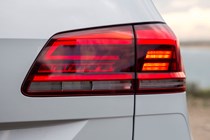

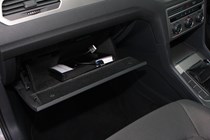
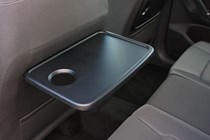
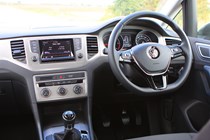
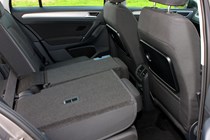
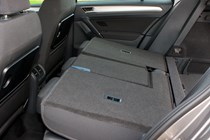

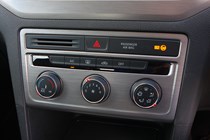
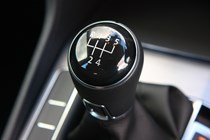

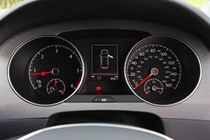

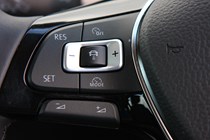

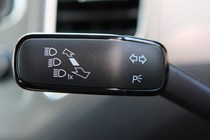
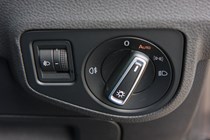
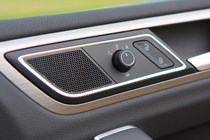
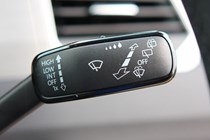
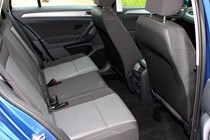
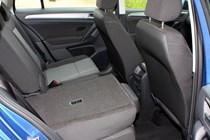
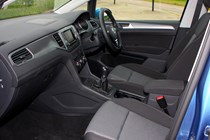
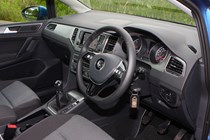

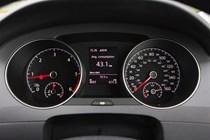
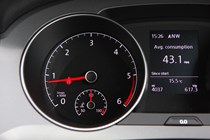
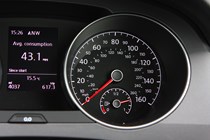
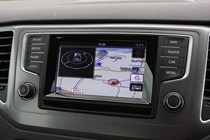
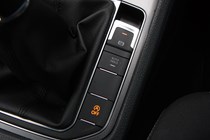

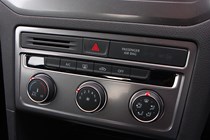
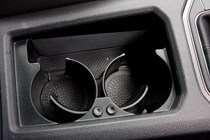
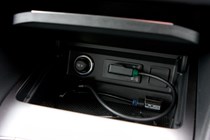
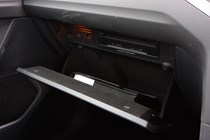
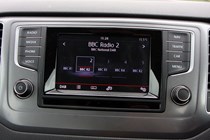

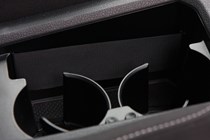
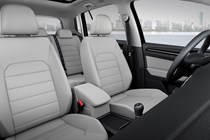
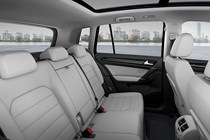
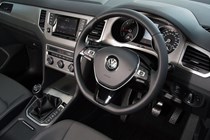
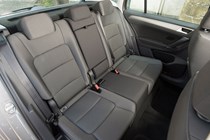
.jpg)
.jpg)
.jpg)
.jpg)
.jpg)
.jpg)
.jpg)



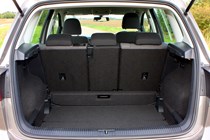

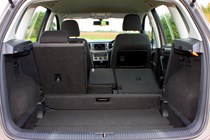
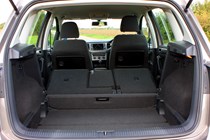
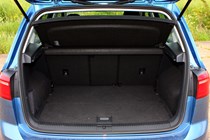
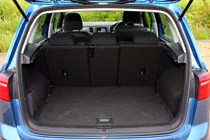
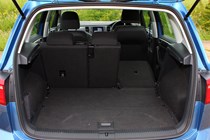
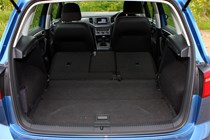
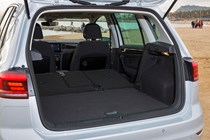
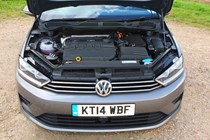
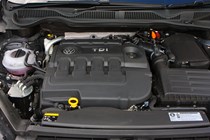
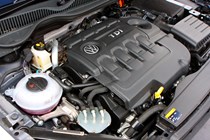
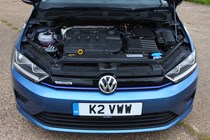
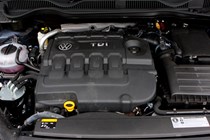

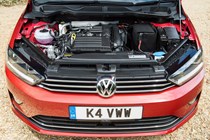
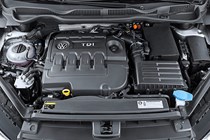
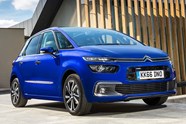
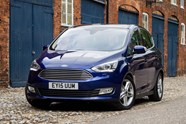
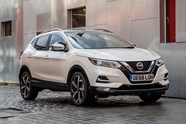


























.jpg?quality=50)

.jpg?quality=50)

















































































.jpg?quality=50)
.jpg?quality=50)
.jpg?quality=50)
.jpg?quality=50)
.jpg?quality=50)
.jpg?quality=50)
.jpg?quality=50)



















